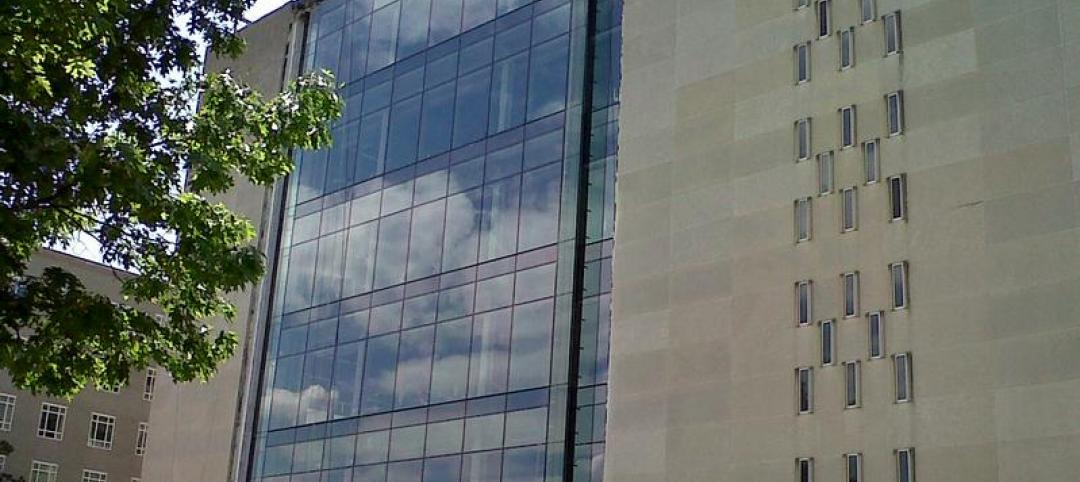|
Washington, D.C. — With millions of sports fans visiting LEED-certified green sports venues every year, the U.S. Green Building Council (USGBC) is proud to announce a collaboration with the Green Sports Alliance, a prominent nonprofit organization supporting the development and promotion of green building initiatives in professional and collegiate sports.
USGBC will support the Alliance to accelerate the green sports movement by exploring LEED certification of sports stadiums across the country. Currently, 25 professional sports venues are LEED-certified, including Nationals Park, American Airlines Arena and Soldier Field to name a few. The partnership will also explore additional engagement opportunities such as USGBC’s Green Apple Day of Service, a day for people across the globe to participate in green school service projects. “Sports fans stepping into LEED-certified arenas, stadiums, ballparks and more experience the benefits of green building firsthand with water conservation, energy efficiency and responsible waste management,” said Rhiannon Jacobsen, director of strategic accounts, USGBC. “It was a natural fit for USGBC to partner with the Green Sports Alliance, which is dedicated to making professional sports healthier and more sustainable.” “The Green Sports Alliance consists of over 180 professional and collegiate sports teams and venues, all looking to enhance their operations and environmental performance,” said Martin Tull, executive director, Green Sports Alliance. “Partnering with the USGBC will help us provide valuable resources and guidance to our members as they work to employ and promote green building initiatives at their respective venues.” USGBC and the Alliance have jointly developed a toolkit focused on advancing green schools through sports, which encourages sports organizations to engage their communities in environmental stewardship through local projects. The Alliance highlights USGBC initiatives at professional and collegiate sports venues through member resources including webinars, toolkits, best practice sharing and social media events. USGBC first collaborated with the Alliance last August when the Seattle Mariners, Seahawks, Sounders and Storm collaborated on a school garden project for the inaugural Green Apple Day of Service. 2013 Green Apple Day of Service projects are currently being planned by sports teams in cities such as San Francisco, Kansas City, Seattle and Philadelphia, host of USGBC’s 2013Greenbuild Conference and Expo in November, where the Alliance will have a presence in the Center for Green Schools booth. To continue engaging the sports industry around its programs, USGBC will be joining the Green Sports Alliance at the 2013 Green Sports Alliance Summit in NYC, August 26-28. ###
|
About the U.S. Green Building CouncilThe U.S. Green Building Council (USGBC) is committed to a prosperous and sustainable future through cost-efficient and energy-saving green buildings. USGBC works toward its mission of market transformation through its LEED green building program, robust educational offerings, a nationwide network of chapters and affiliates, the annual Greenbuild International Conference & Expo, the Center for Green Schools, and advocacy in support of public policy that encourages and enables green buildings and communities. For more information, visit www.usgbc.org. |
About LEEDAs the most widely recognized and widely used green building program across the globe, LEED is transforming buildings, homes and communities in all 50 states and 135 countries. LEED guides the design, construction, operations and maintenance of more than 50,000 projects worldwide, comprising 9.8 billion square feet of commercial and institutional construction space, and more than 134,000 additional residential units. By using less energy, LEED-certified spaces save money for families, businesses and taxpayers; reduce carbon emissions; and contribute to a healthier environment for residents, workers and the larger community. Learn more at usgbc.org/leed. |
Related Stories
| Jun 11, 2012
Survey reveals emerging trends in parking
Industry-transforming innovations are changing the way we park.
| Jun 11, 2012
Buro Hapold hires new principal Neil Porto
Porto brings a broad depth of expertise in civil and structural engineering to new and existing projects.
| Jun 11, 2012
Historic church gains energy efficiency, retains aesthetics with architecturally rated windows
New windows would need to not only stand the test of time, but also accommodate the aesthetics of an architecturally historic church.
| Jun 11, 2012
Genivar and WSP Group join forces
Genivar concurrently announces a $225 million public bought deal of subscription receipts, a $197 million private placement of subscription receipts and new credit facilities.
| Jun 11, 2012
SimplexGrinnell highlights integrated suite of web-based technologies at NFPA Expo
eservices platform uses the power of the Internet to deliver more value to customers.
| Jun 11, 2012
Reed Construction announces new hire and promotion
Reed Construction hired Augie Insalaco as a project manager and promoted Matt Mahoney from project intern to project engineer.
| Jun 11, 2012
Hill International selected as CM for Porto Arabia Towers in Qatar
The complex is a mixed-use development featuring both residential and commercial properties.
| Jun 8, 2012
Living Building Challenge wins the 2012 Buckminster Fuller Challenge
The Living Building Challenge was chosen from a pool of 122 of entries from around the world.
| Jun 8, 2012
Nauset Construction completing sustainable dorm for Brooks School
Student input on green elements provides learning experience.
















